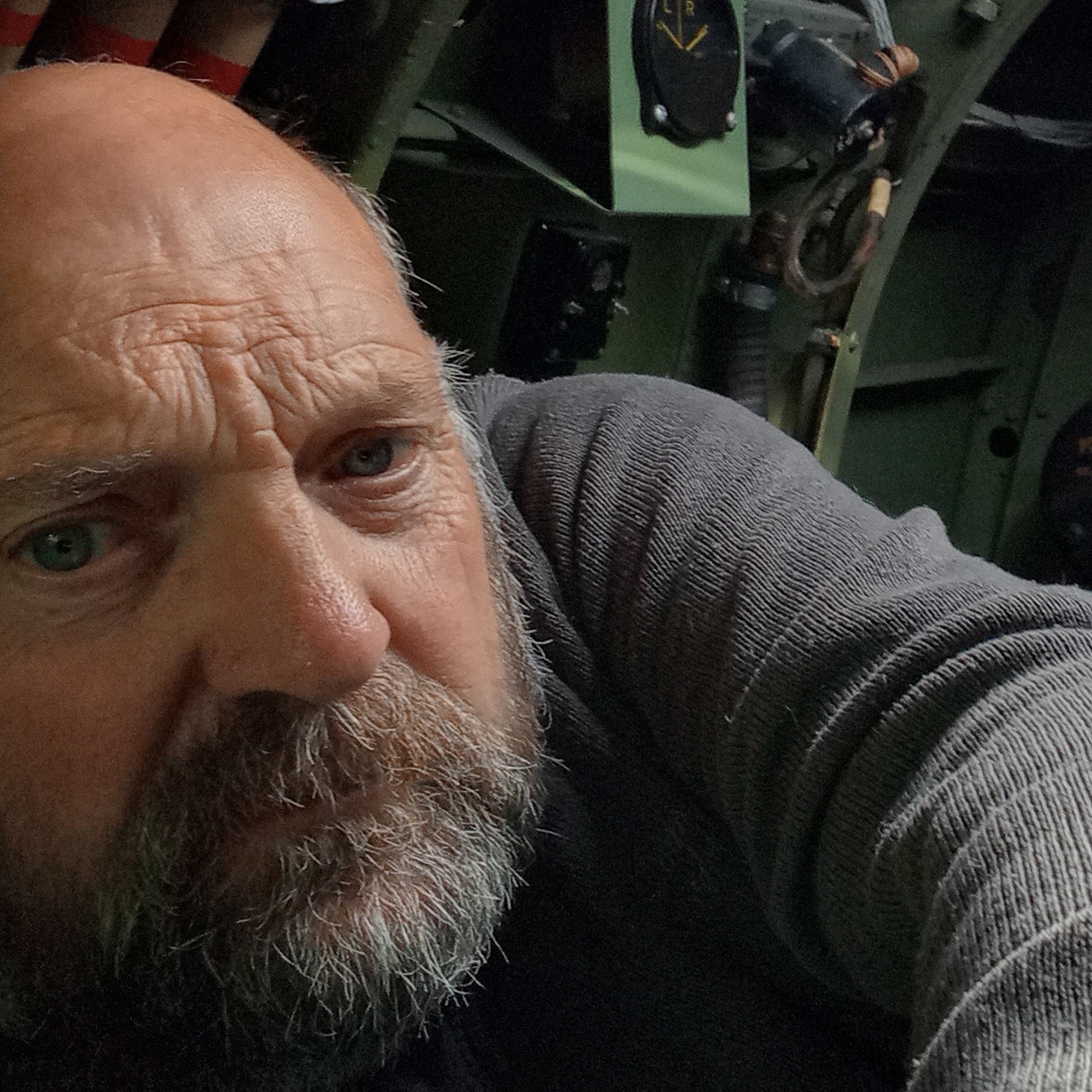
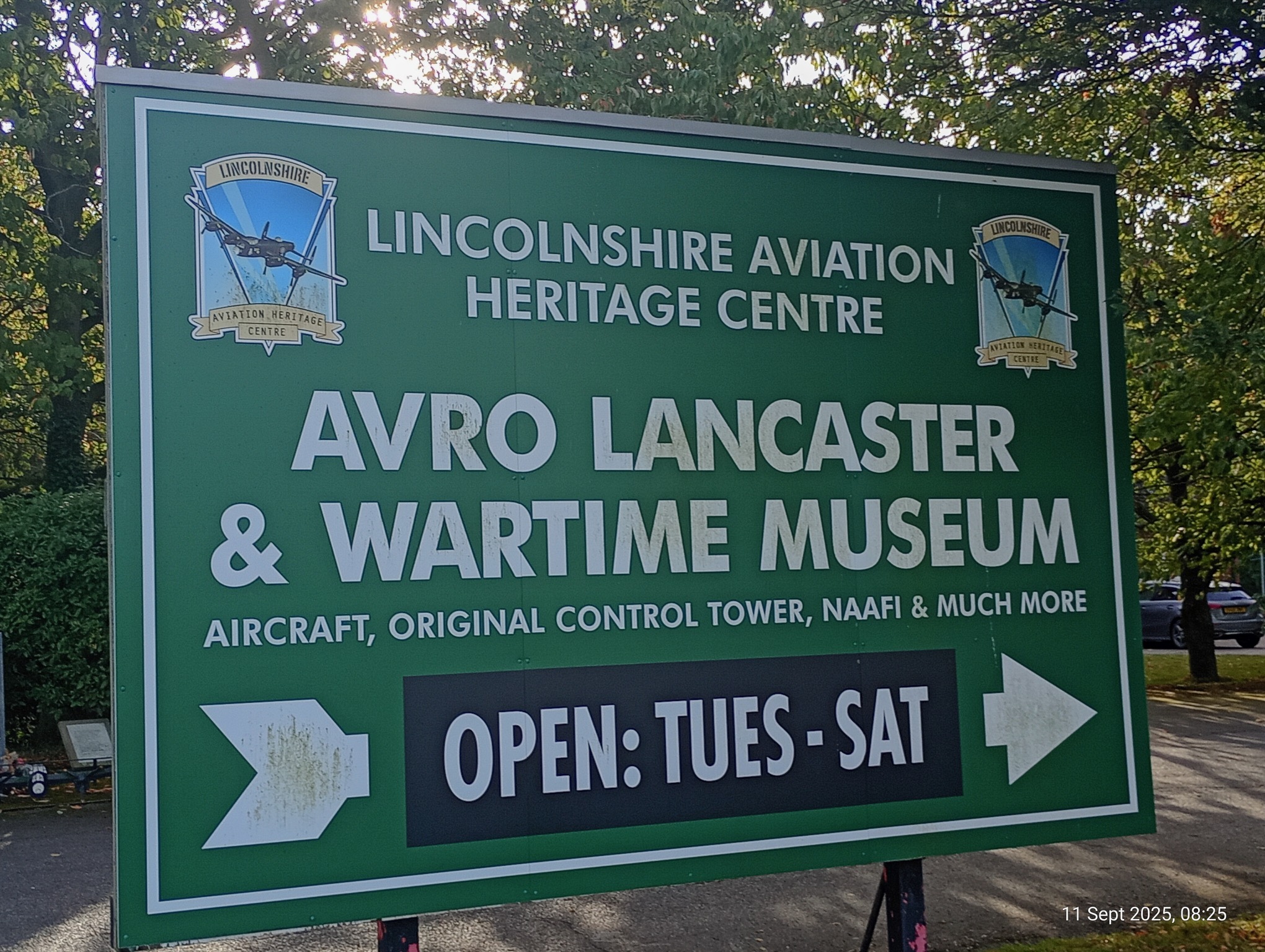
A trip to Lincolnshire is a must for anyone interested in WW2 Air war history. It was the heart of the RAF air war into occupied Europe and until D-Day, the only way to take the fight into the heart of Germany. The pages of history have turned and the right and wrong of the morals and the sacrifice of those who had to do there duty should never be forgotten.
For my 60th Birthday I was given a taxi ride day in Lancaster NX611 Just Jane at East Kirby airfield. It was one of over 800 airfields built in the massive construction effort in the early war years for RAF RN and American AF to launch raids into occupied Europe.
The Land was bought off the local family, built, and then made operational in 3 Months at cost of around £1,000,000. About £50 Million at today's price. Around 3000 personal were based there with two squadrons of Lancaster's from August 1943 to April 1945. Over 120 Lancaster were lost on ops or accidents with 850 personal.
Post war the runways were dug up and used as the hardcore for the main hanger control tower. Other buildings were left for the farm to be used.


The Panton family lost 2 sons who served as Bomber crew, one on the infamous Nuremberg raid. The site is in their memory along with the other 55.000 and the victims of war.
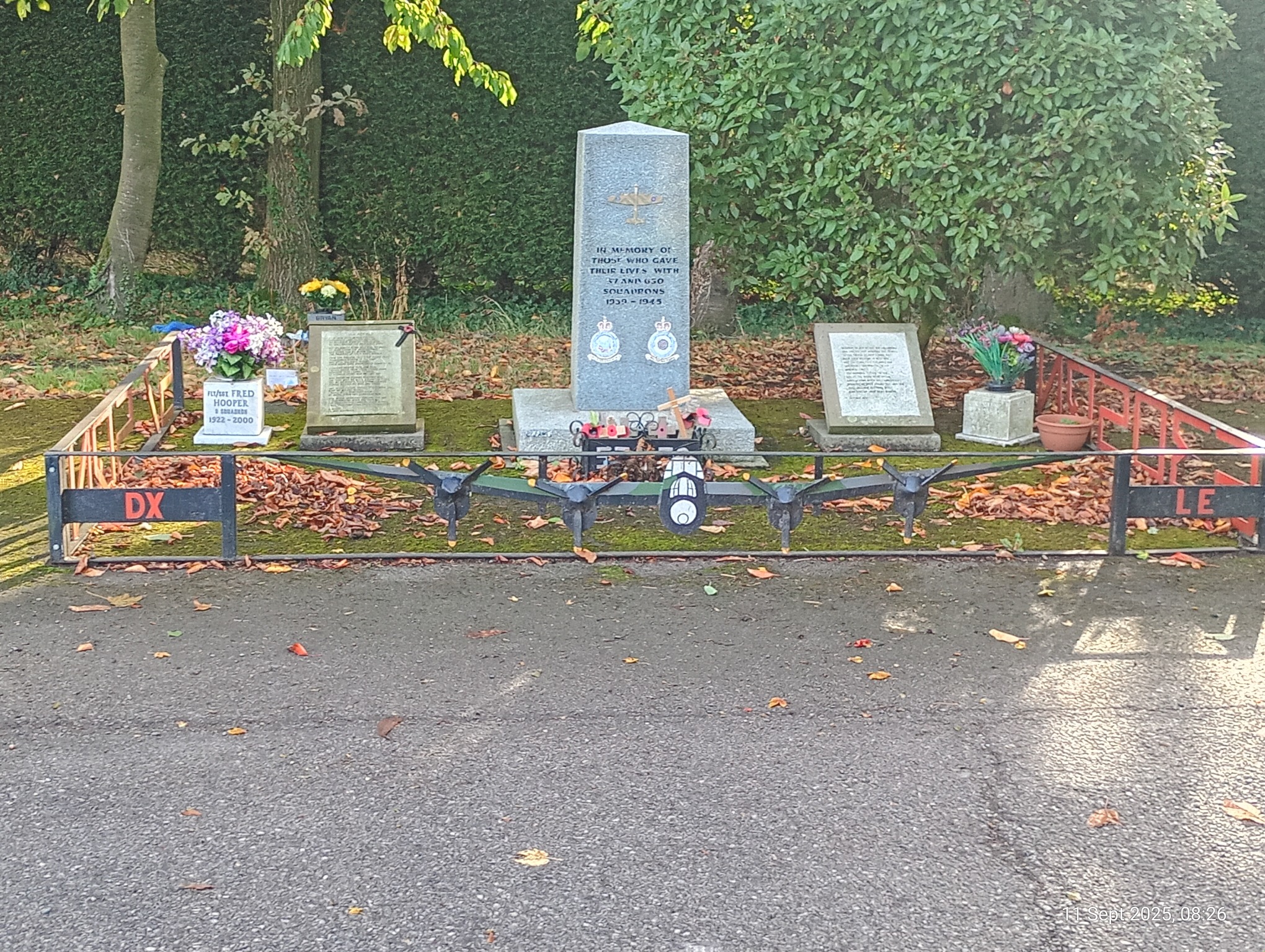
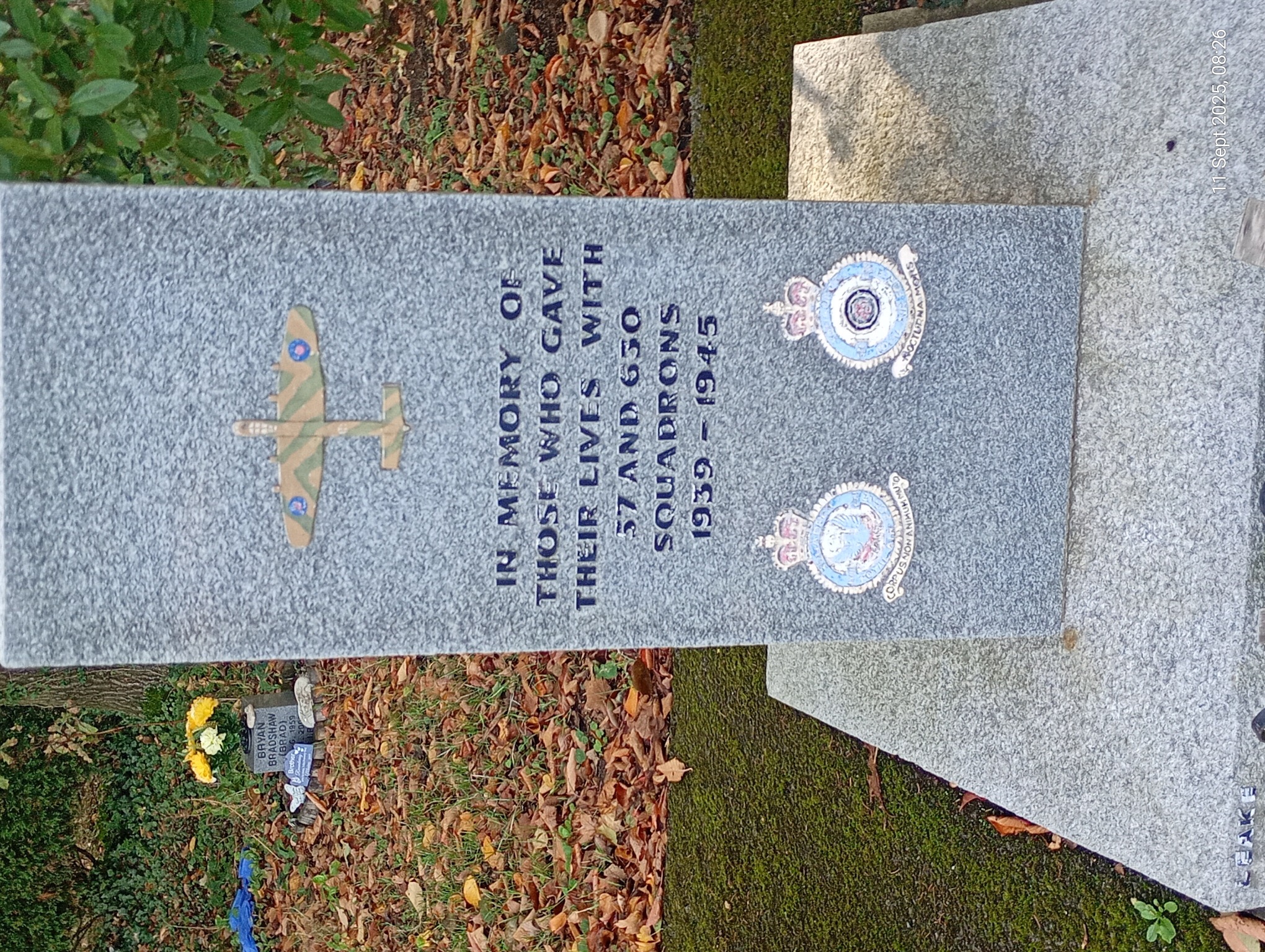
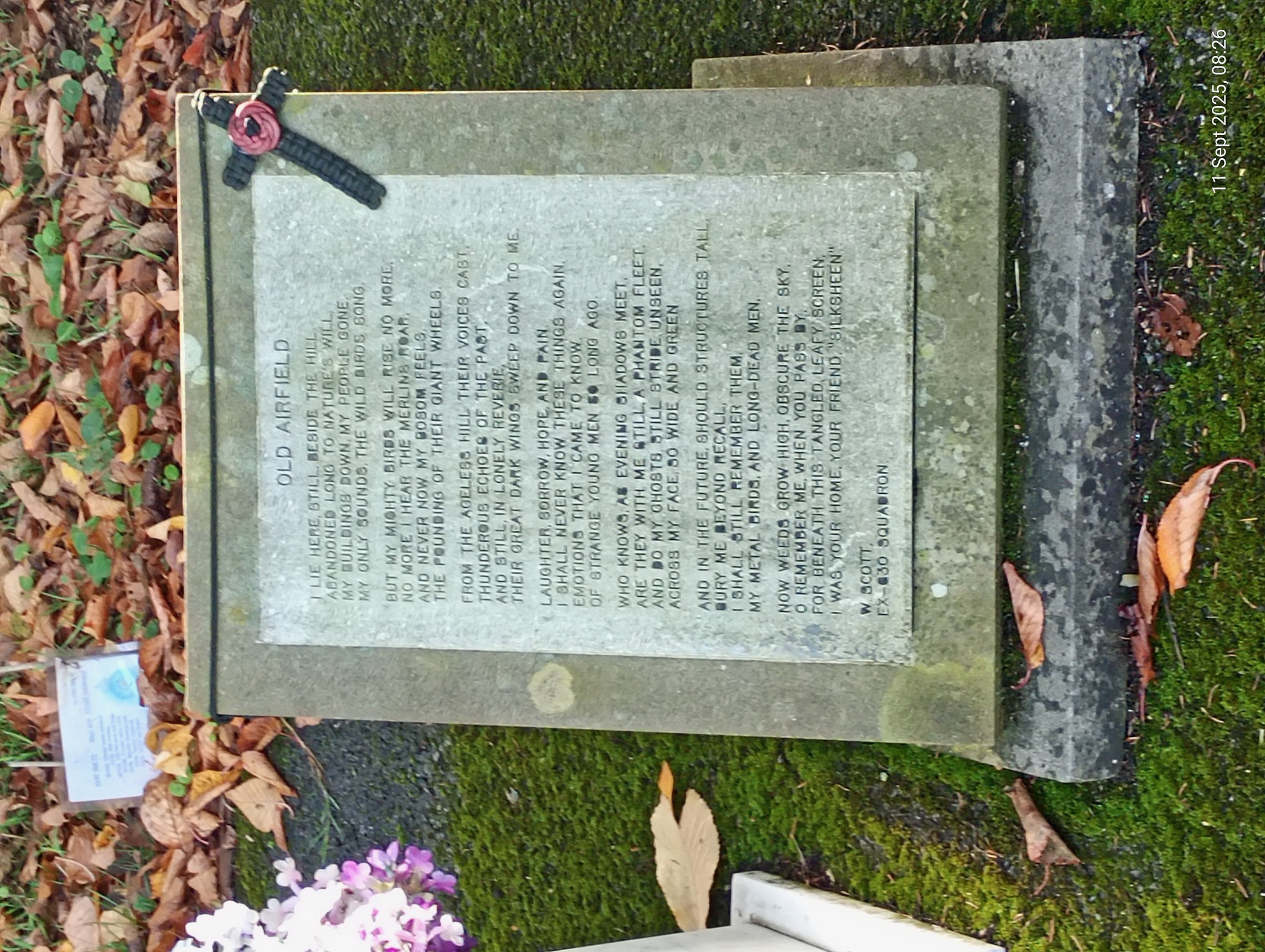
Lancaster NX611 was built at the Austin car company Longbridge factory in Birmingham in 1945 one of the final 150 built there before the end of the war. It never saw operational service with the RAF but along with 21 others, was sold to the French Navy for work in Pacific on maritime survey work. She eventually returned to the UK and after spells on display at Blackpool where many Lancaster were built, Scampton home of 617 Dambuster Sqn it was bought by the family as the center piece for their museum.
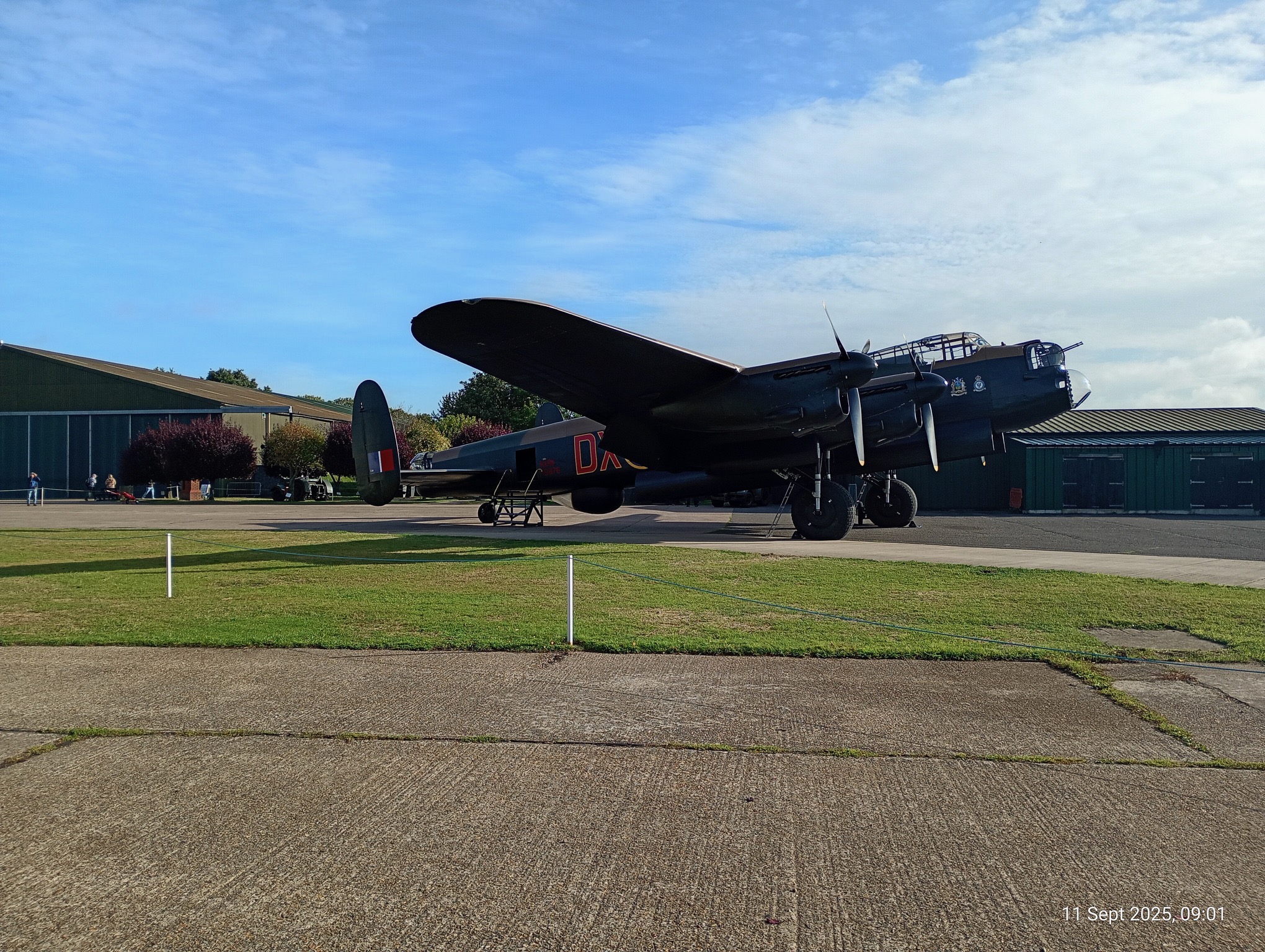
It was brought back up to taxable condition with the goal to ultimately to return to flight. They use the winter months to disassemble the aircraft and fit replacement parts. They are working with the Musée d'Air in France using and swapping parts from their Lancaster NX664. She wears 57 Sqn codes on the Starboard side.

The taxi day began with a meet and greet at the Sgt Mess followed by a briefing first by Phillip Panton the site owner explaining the site history and background. It was then followed by a safety briefing on the aircraft itself - they have 3 crew on board during the taxi run: the pilot, an engineer, and a safety officer in the rear of the aircraft.
They take 10 passengers on each run doing 2 per trips day. A picnic lunch is provided on the day with afternoon tea provided. My run was in the afternoon so spent the rest of the morning looking around the exhibits on which I shall report in part 2.
As stated there are 10 slots on the Lancaster: 5 in the front, 5 in the rear so first order is to decide who goes where. If you have had a relative or connection to a relative you can chose that position. If there is more than one, it's down to the luck of the cards. A pack is shuffled and highest card wins.
On our trip, one of my fellow crew had a Navigator in the family, I had friend whose uncle was the wireless operator so we got those to take those slots. It was then time to board the aircraft
Those of us up the front went in first after we crossed the infamous main spar, so more elegant than others we took turns in the nose where the bomb aimer was stationed and the pilot seat for the photo out of the window.

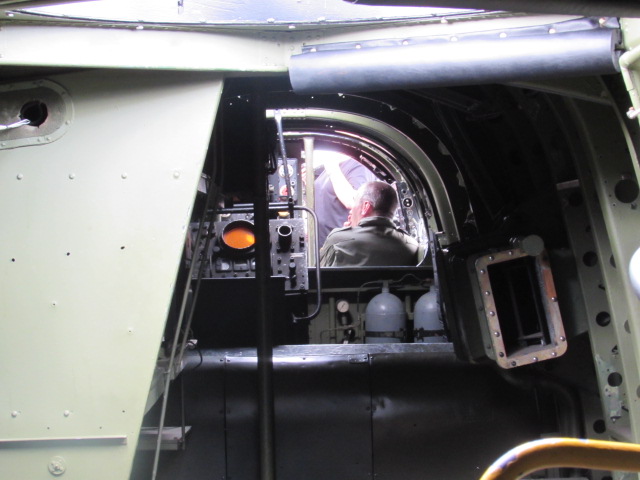
The HS2 radar was a post war fit you can how much of an obstacle course it is.
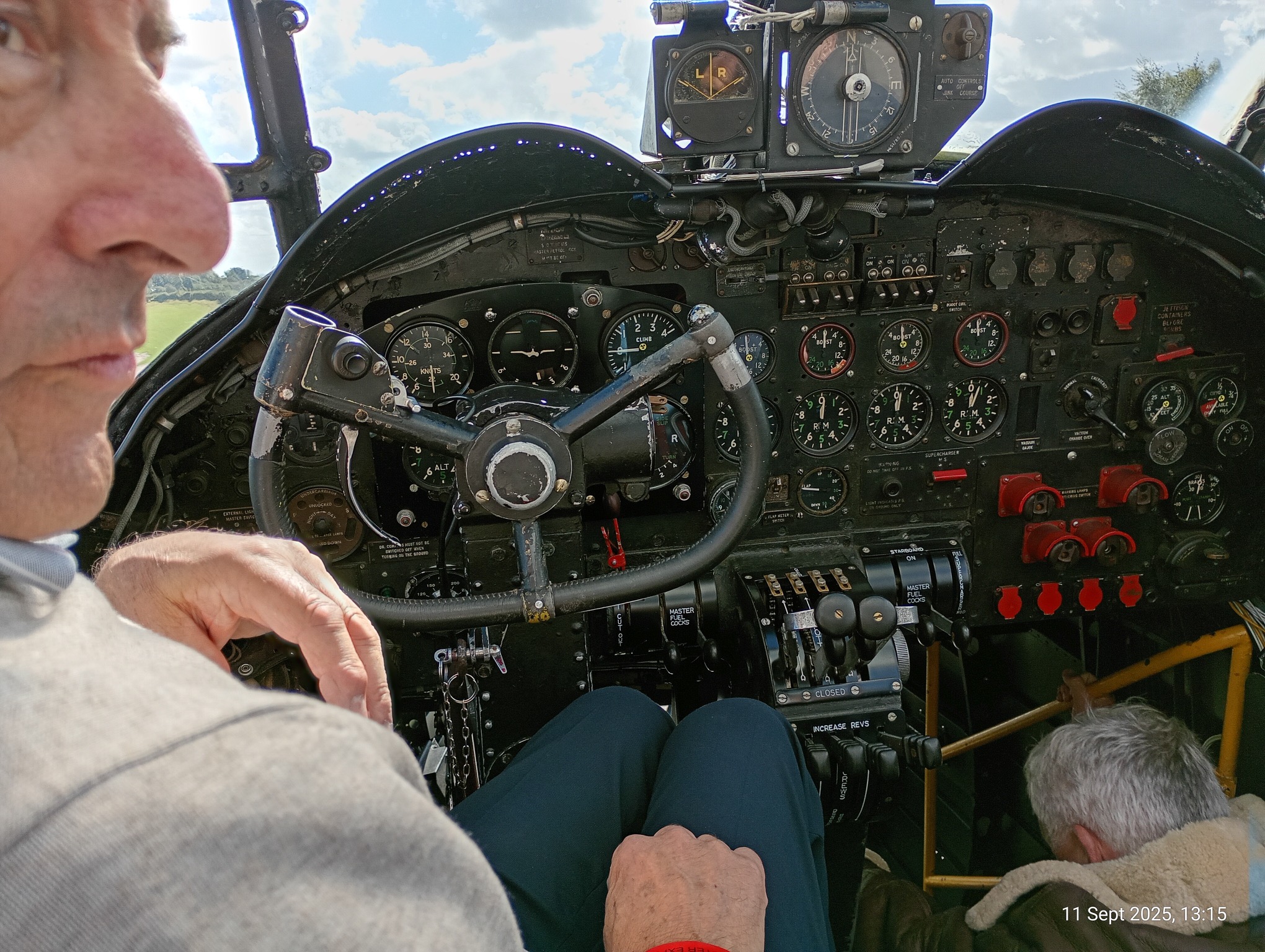
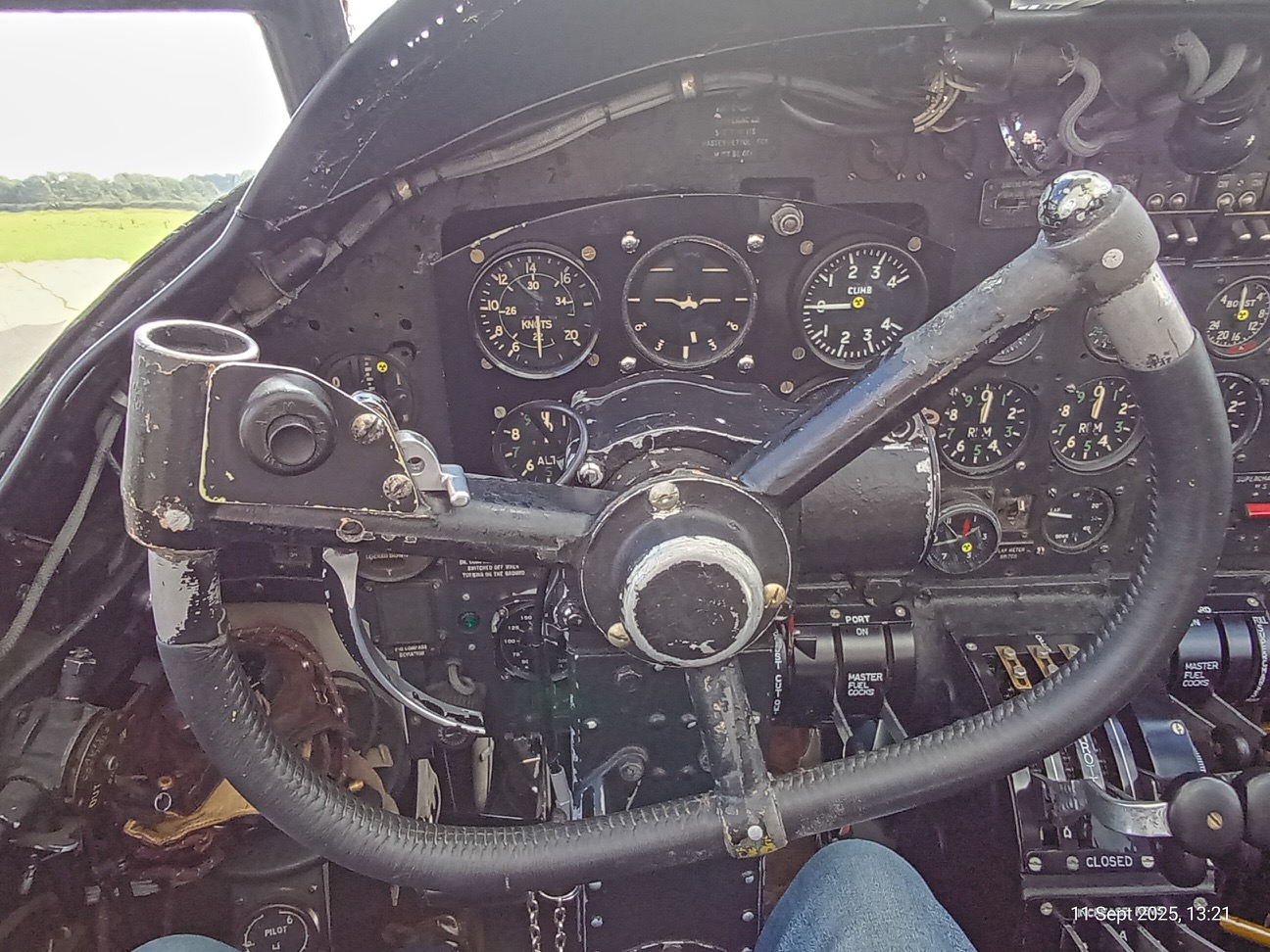

Once the engineer joined us on board we settled in our assigned positions. A quiet calm then descended until the Starboard inner engine spurted into life then joined by the other three. After final checks the brakes were released and we moved forward off the concrete hard standing. The noise was not as bad as I had thought, we went about 4 times then pulled to a stop.
The engines then were run up to 2000 rpm, about 2/3 take off power the airframe stopped vibrating and it felt like she wanted to fly. We moved back around to the hard standing. One last run up then quiet. We all sat still taking in the moment.
The engineer came back to the main spar to shut the fuel cocks, we then vacated the front to try the rear turret, again not a very graceful way in or out.
To sum up it was a very humble experience to sit and wherever those young men fought and died in the dark and cold. It was amazing how any of them baled out at all.
To those lucky people who have flown in her Canadian sister Lancaster it most be a wonderful hit of emotions.
She will fly again and as one who has seen them both in the air together, I look forward to the sight of three.
* * *
